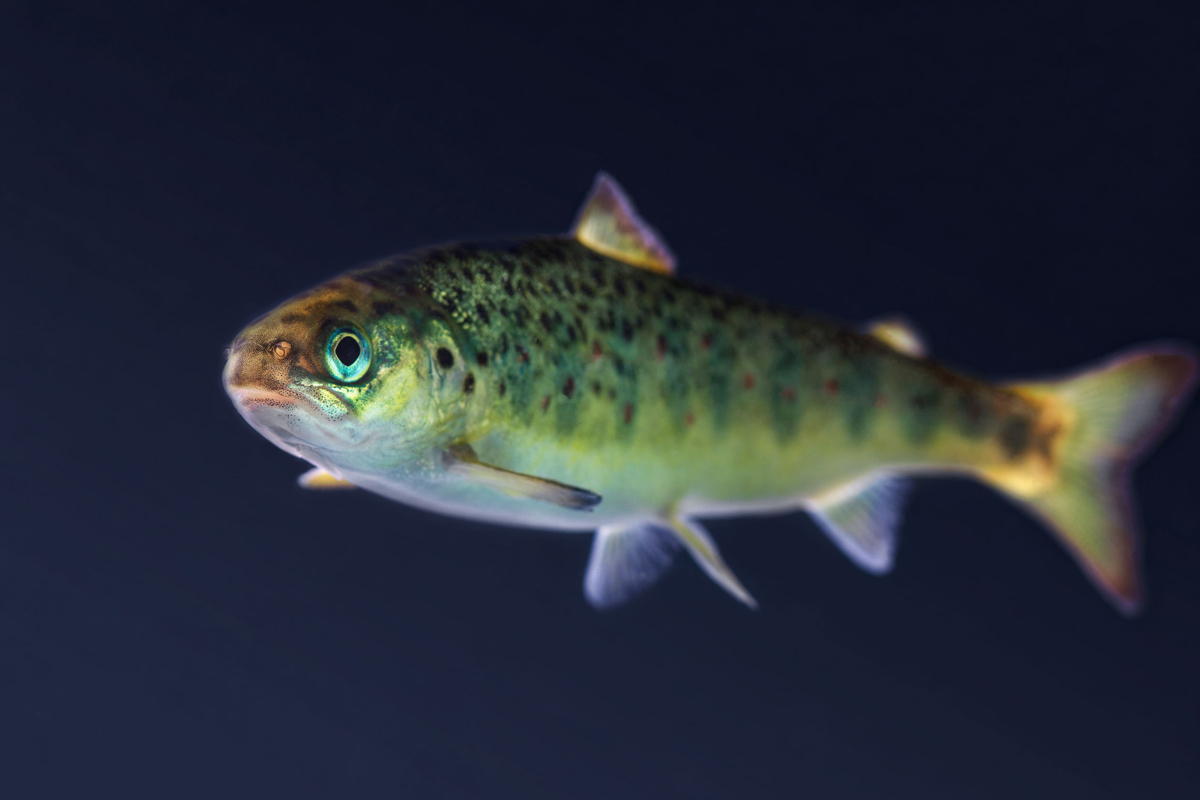Farming of Atlantic salmon (Salmo salar) in sea cages began in Norway in the 1960’s. The farmers were quickly successful, and this prompted the development and establishment of Atlantic salmon aquaculture in Scotland, Ireland, the Faroe Islands, the US, Canada, Chile and Australia.

Currently, approximately 2.6 million metric tons of Atlantic salmon are produced worldwide – with Norway being the top-producer (around 1.36 million tons in 2019), closely followed by Chile.
The main reasons for its success as an aquaculture species are its high market value combined with its ability to adapt to different environments and handling processes. Like most species of salmonid, the Atlantic salmon is anadromous, meaning that their lifecycle starts in freshwater where they spend their first years (1-6) before migrating to seawater and then returning once again to spawn infreshwater for completion of their lifecycle. This has been replicated in the commercial production of Atlantic salmon which are first reared in freshwater tanks where once hatched from eggs the juvenile fish, start feeding begin to feed to become smolts before they are transferred to sea cages. In the freshwater phase, each fish is vaccinated prior to its smoltification, so that they are well prepared for a new life in seawater.
Rainbow trout (Oncorynchus mykiss) is one of the most common freshwater species farmed in Europe, the United States and the Middle East. The market for these fish is essentially split into two parts, one for small rainbow trout and one for large. The small trout are reared in freshwater while the large ones are reared in a similar way to the Atlantic salmon. The main producers of large rainbow trout are Chile, Finland, Denmark and Norway.
In the first few decades of salmonid aquaculture in sea cages, the emerging industry faced several problems with bacterial and viral infections as well as parasitic and mycotic infectious agents. This led to slowed growth, high mortality rates, and a broad use of antibiotics and antiparasitics.
In the early 1990’s the introduction of PHARMAQ’s first injectable, oil-based vaccines started the true revolution in the field of fish health management. The oil-based furunculosis vaccine was made multivalent in 1992, securing protection against three types of vibriosis bacteria. A fifth component against winter ulcers (Moritella viscosa) was included in 1996. In 1997, the first six component vaccine for fish was launched, including an IPN-virus component.
The introduction of oil-based vaccines enabled the disease-plagued industry to move away from intensive and widespread use of antibiotics, towards prevention and protection through routine vaccination. Effective vaccination might have been the single most important factor in enabling global salmonid aquaculture to grow from around 250,000 tons in 1990 to 2,500,000 tons in 2018.
The introduction of vaccines has made it possible for the Salmonid farming industry to reduce their overall use of antibiotics. Compared to the 1987 levels, the Norwegian aquaculture industry has reduced its use of antibiotics by an astonishing 99,8 % per ton of produced salmon and trout. In 2019, Norway used only 222 kgs of antibiotics in the production of 1,3 million tonnes of salmon and trout.
Since the introduction of oil-based vaccines, billions of salmonids worldwide have been injected with vaccines from PHARMAQ.
PHARMAQ is the global leader in vaccines and innovation for aquaculture and part of Zoetis, the world leader in animal health. The company provides environmentally sound, safe and efficacious health products to the global aquaculture industry through targeted research and the commitment of dedicated people. Production facilities, administration and research and development activities are based in Norway with subsidiaries in Chile, United Kingdom, Vietnam, Turkey, Spain, Panama and Hong Kong. PHARMAQ has approximately 300 employees. The company's products are marketed in Europe, North and South America, and Asia. For further information, visit the company's website at www.pharmaq.com. Privacy Policy. Cookie Policy. Terms of Use.
Copyright © 2020 Zoetis LLC. All rights reserved.